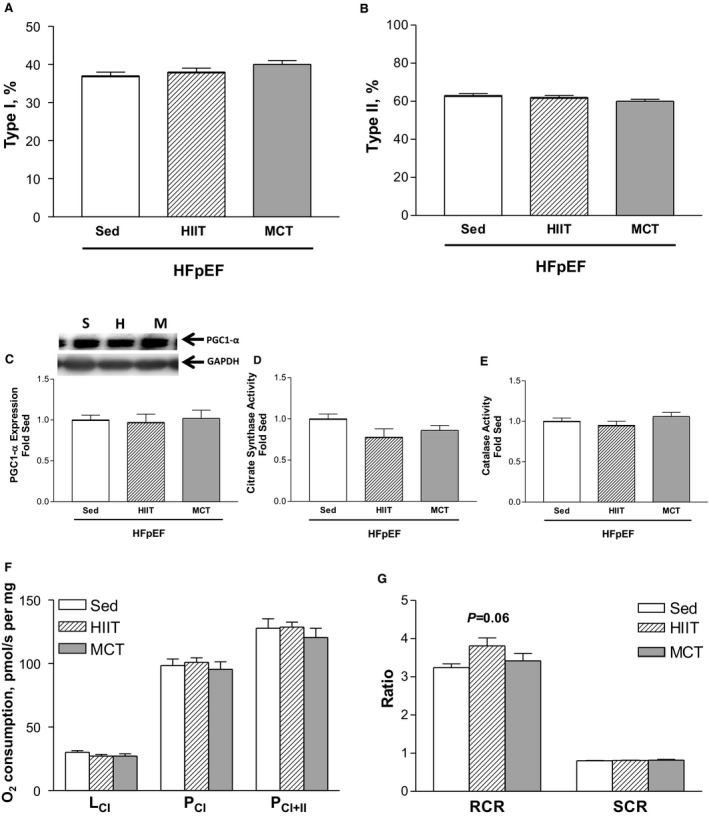Figure 7.

In heart failure with a preserved ejection fraction (HFpEF) rats at 28 weeks, fiber type proportion in the diaphragm for type I (A) and II (B) isoforms was not influenced following either high‐intensity interval training (HIIT) or moderate‐continuous training (MCT) when compared with sedentary (Sed) controls (see Figure 6A through 6C for representative diaphragm sections). Similarly, markers of mitochondrial content remained unchanged, including the protein expression of peroxisome proliferator‐activated receptor gamma coactivator 1‐α (PGC1‐α) (C) and enzyme activities of both citrate synthase (D) and catalase (E), as were functional measures of mitochondrial respiration (F) and the respective control ratios (G). Respiration states assessed, in turn, included: LCI, complex I leak respiration following addition of malate and glutamate; PCI, complex I phosphorylated state following addition of ADP; PCI + II, complex II phosphorylated state following addition of succinate. The abbreviations S, H, and M for Western blot lanes represent loaded samples from HFpEF rats in the sedentary (S), HIIT (H), or MCT (M) groups, respectively, with GAPDH used as a loading control. Data are presented as mean±SEM, analyzed with 1‐way ANOVA, with n=13 for Sed, n=11 for HIIT, and n=11 for MCT. RCR indicates respiratory control ratio; SCR, substrate control ratio.
